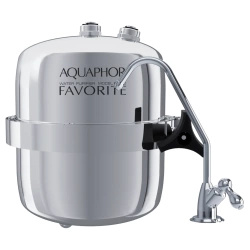In aqua sanitas – the ancient Greeks used to say. Nowadays, in the era of global ecological problems, can we repeat after the Greeks that “health lies in water”? Many will probably hesitate before making this statement. How to make sure that there are no dangerous elements floating in our water? We need to do water testing.
 Water is unfit for drinking if it contains dangerous substances and microorganisms or if the concentration of certain chemical compounds is too high. But how to find out what is flowing in our taps? The only reliable way to determine the quality of water is to conduct laboratory testing.
Water is unfit for drinking if it contains dangerous substances and microorganisms or if the concentration of certain chemical compounds is too high. But how to find out what is flowing in our taps? The only reliable way to determine the quality of water is to conduct laboratory testing.
Where to conduct water testing?
Water supplied to homes from municipal waterworks is systematically controlled. To find out the latest test results for network water, simply contact your municipal / town waterworks. It has already become a practice that these institutions publish the current test results of water quality on their website. So theoretically, the water that comes to us from the network should be safe and clean. However, in practice it is not always so. The water flows through the extensive water supply system, municipal and domestic. During this „journey” the water is exposed to numerous dangers lurking in the pipes. They include rust, sediments or microorganisms living in the pipes.
If we use our own water supply, e.g. a well, then unfortunately the duty of water testing is on us. Water can be tested at a local branch of sanitary authorities or at a private laboratory (see the sample service). Some companies that sell water filters also offer water testing, but this is usually bundled with the purchase of a water treatment device.
Physicochemical and microbiological analysis
A basic water test consists of a physicochemical and microbiological analysis. In the case of the former, water is tested for its physical properties – turbidity, color, odor, hardness and reaction as well as oxidation and conductivity. It also examines the presence of such compounds as ammonia, nitrites, nitrates, chlorides, iron and manganese. On the other hand, microbiological analysis aims to determine whether water does not contain dangerous bacteria, for example, fecal streptococci or Escherichia coli.
How is the sample taken?
When it comes to taking a sample for physicochemical analysis, a clean bottle of 1.5 liter is sufficient. It should be thoroughly rinsed twice with tap water and filled with proper sample (preferably up to the cork). In the case of a microbiological test we will need a sterilized, tightly packed bottle to take the sample. This can be obtained from the laboratory upon payment of a small fee.
As far as the process of taking a test sample is concerned, it is best to choose a kitchen tap that we use to draw for preparing meals. It is worth remembering that we should not take water immediately after turning on the tap. It is necessary to wait a few minutes for water to flow down to ensure that any potential contaminants are carried from pipes. Collected samples should be delivered to the lab the same day. The result is usually known after a few days.
What next?
The next course of action depends on the results of the test. If the parameters of the tested sample are within the standard limits, your water is of good quality. If not, you need to find appropriate equipment to treat your water. The type of water filter to be installed will depend on hazardous substances and exceeded parameters detected in your water.
To find out more about water cleaners and filters, read other articles in this blog.

